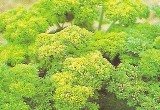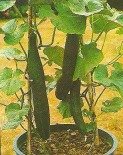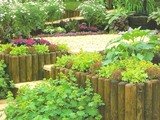|
An Edible Flowers List to Make a Beautiful Vegetable GardenHere’s an edible flowers list that’s perfect to add to your edible garden. I called them perfect simply because they are well known for having excellent culinary and medicinal uses. These flower vegetables are also good sources of vitamins and minerals. You may have even seen them sometimes in salads when you go out to eat. We’re going to talk about these beautiful and nutritious edible flowers. Lets take a look at this special edible flowers list... Dandelion The history behind this was that it was introduced in North America as a food crop. It’s a perennial that’s very popular in the garden. These plants are low and have dark green leaves that contain deeply indented margins. They also contain a deep tap root with some bright beautiful yellow flowers that consistently appear during the growing season. This edible flower is reproduced both by the seed as well as any parts of the taproot left in the soil. To effectively maintain this, pull the baby plants before they flower or you can take out the whole taproot of the mature plants to avoid regrowth. Harvest timeWhen the leaves are 3 to 4 inches in length, harvest them to get that delicious taste. If you harvest them when they’re longer, they can taste bitter and tough. The baby leaves bring a nice bitter taste to spring salads and they even taste good as cooked greens. Chickweed This special gardening vegetable grows best in cool weather conditions and appears in the beginning of spring. It’s a short plant with smooth, pointed leaves. These leaves are about ¼ to 1 inch long with a bright green color on the top surface. The underside of the leaves is a lighter color. The slim stems contain a lot of branches with a line of white hairs on one side of each branch. The bright white flowers are supported by the stalks that rise from the bottom of the leafstalks. The stems and leaves can be harvested to contribute towards a delicious spring salad or they can be used for making teas. Lamb’s QuartersThese are also referred to as “fat hen” and are annual flowers that grow in spring and summer. The leaves are about 4 inches in length and are triangular in shape with some wavy edges. The leaves are coated by a white, mealy powder. These plants usually grow from 1 to 6 feet tall; it all depends on the soil fertility. To use for the kitchen, harvest the leaves when they are soft and small where they can be cooked like spinach. Purslane This is also a short edible flower plant that comes with some really fleshy stems, leaves and tiny yellow flowers. They grow best in damp conditions but at the same time they can withstand considerable drought. The seeds germinate in the later part of spring. The stems and leaves come with a tart, lemon flavor. The baby shoots are excellent ingredients for salads. The more mature shoots can be used in meals such as pork stew, egg dishes and soups. The flower vegetable seed as well as some excellent varieties can be purchased from specialty vegetable seed companies. An Edible Flowers list Must Include BroccoliI believe that an edible flowers list is not complete without broccoli. 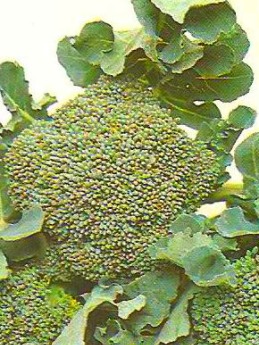 It’s tasty and very nutritious. The part of the broccoli we eat is the flower head. That’s a small mass of tiny closed buds along with its stem. Varieties consist of green, purple (that turns green when cooked) and white. The others mature at different times of the year with big, small and weirdly shaped heads. Broccoli likes lots of sun and not too much heat. It grows successfully in cool summers and is cultivated as a spring or fall crop in hotter areas. The soil must be sweet and fertile. Broccoli must be watered regularly during the growing season. When it comes to the topic of pests and diseases, it’s best to grow broccoli in a different area in your garden every year. Growing BroccoliYou can start from the baby plants that you can purchase or transplants grown at home. Begin in the middle part of spring when the average daily temperatures will be about 50 degrees F. Space the plants at about 18 to 24 inches apart in all directions. If you want to go with rows, space them 2 to 3 feet apart. You can benefit a lot from a few weeks of cool-season growing by using a bell shaped cover for protection from frosts. To yield crops in the fall, start the seeds in the garden 10 to 12 weeks prior to the first fall frost date. Sow the seeds at ½ inch deep and 3 to 4 inches apart. They should take about 7 to 10 days to germinate. Thin to plant spacing as for spring. The hardy varieties may be sown in the late part of summer to over winter if the weather permits. The following spring is where the shoots will be produced and can be called “sprouting broccoli.” It will take about 45 to 85 days to mature according to the variety. Harvest TimeThe first head the plant produces will be the largest. Harvest this and all of the following clusters that are smaller with a piece of stem that’s attached. This must be done before the tightly closed buds begin to loosen and flower. When the main sprout is cut, the plant will start to grow smaller side sprouts where the leaves are attached to the stem. Always water the plants and apply some side-dress of fertilizer to enhance the production of the following crops. When you do that you should be able to get a sufficient number of good quality crops. Keep harvesting when the clusters are in the tight bud stage. The plants will produce until the first frost period. Cauliflower is a Great Addition to an Edible Flowers List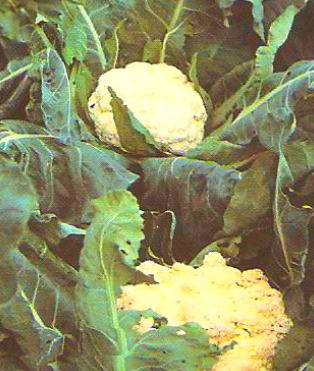 To get the best results, cauliflower must be grown in a long, cool and moist condition. Actually that’s the only condition required for the growing stage as any other condition can make it difficult to grow. It's a nice vegetable and as I've mentioned before is excellent for an edible flowers list. Growing CauliflowerA sufficient, cool and moist growing season is definitely the best way to go and will make it pretty easy for you. The varieties are made up of white, green, purple and orange that contains lots of vitamins and minerals. You can even grow cauliflower with just 2 hours of sunlight every day. Plant the seeds at about ¼ to ½ inch deep at 3 inches apart. The seed requires some heat for germination at about 80 degrees F. You can grow the transplants for 5 to 7 weeks before you transplant them in the garden. Once the soil can be worked, place the plants at about 20 inches apart. The best time to sow the seed is in the summer in order to take advantage of the heat for germination. The shorter days in the fall and the cool weather condition will definitely boost excellent growth. Always water your crops and mulch to keep the soil moist as well as to control weeds. Cauliflower usually takes about 60-100 days to mature according to its variety. Harvest TimeCauliflowers grow quickly once their heads begin to appear. The best time to harvest is when they’re 6 inches in diameter or when their flower buds are tightly closed. Don’t allow the flower buds to loosen and open up. Each of the individual plants produces a single head. For the pure white curds, when they are about 3 to 5 inches in diameter, pull up the larger outer leaves over the head and secure using a string. This is to protect the head. You can wait for about 4 to 12 days to harvest. The plants will hold exceptionally well in the garden in cool weather and will also tolerate light frosts.
An edible flowers list is really worth considering when planting vegetables. Not only do they make your garden look beautiful, they can also be used for garnishing and other cooking purposes. The vegetables in an edible flowers list are exotic vegetables. Some of these vegetables also come with some unusual varieties that can make your edible garden a one of a kind garden. So when you're growing vegetables, you can choose some vegetables that are a part of an edible flowers list. They're healthy, nutritious and very pleasant to look at.
|






